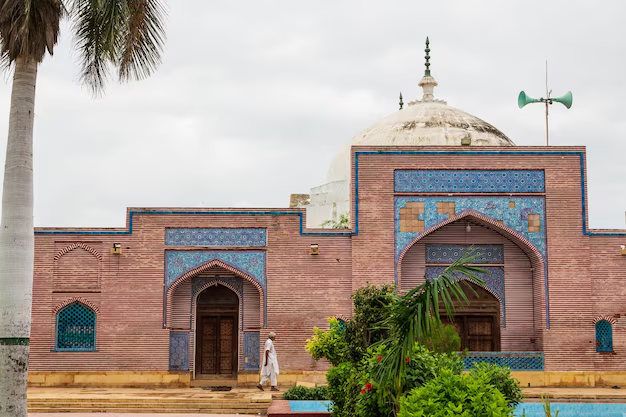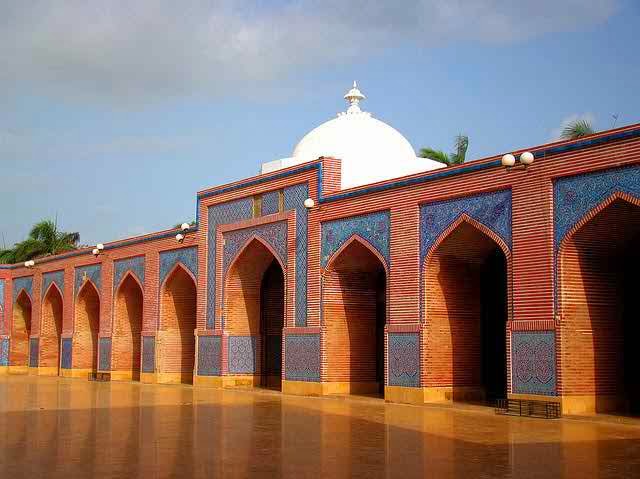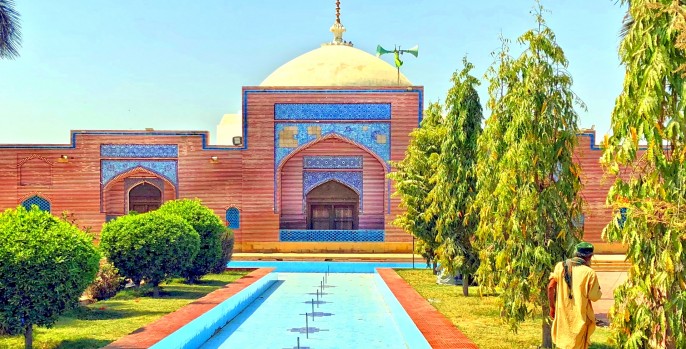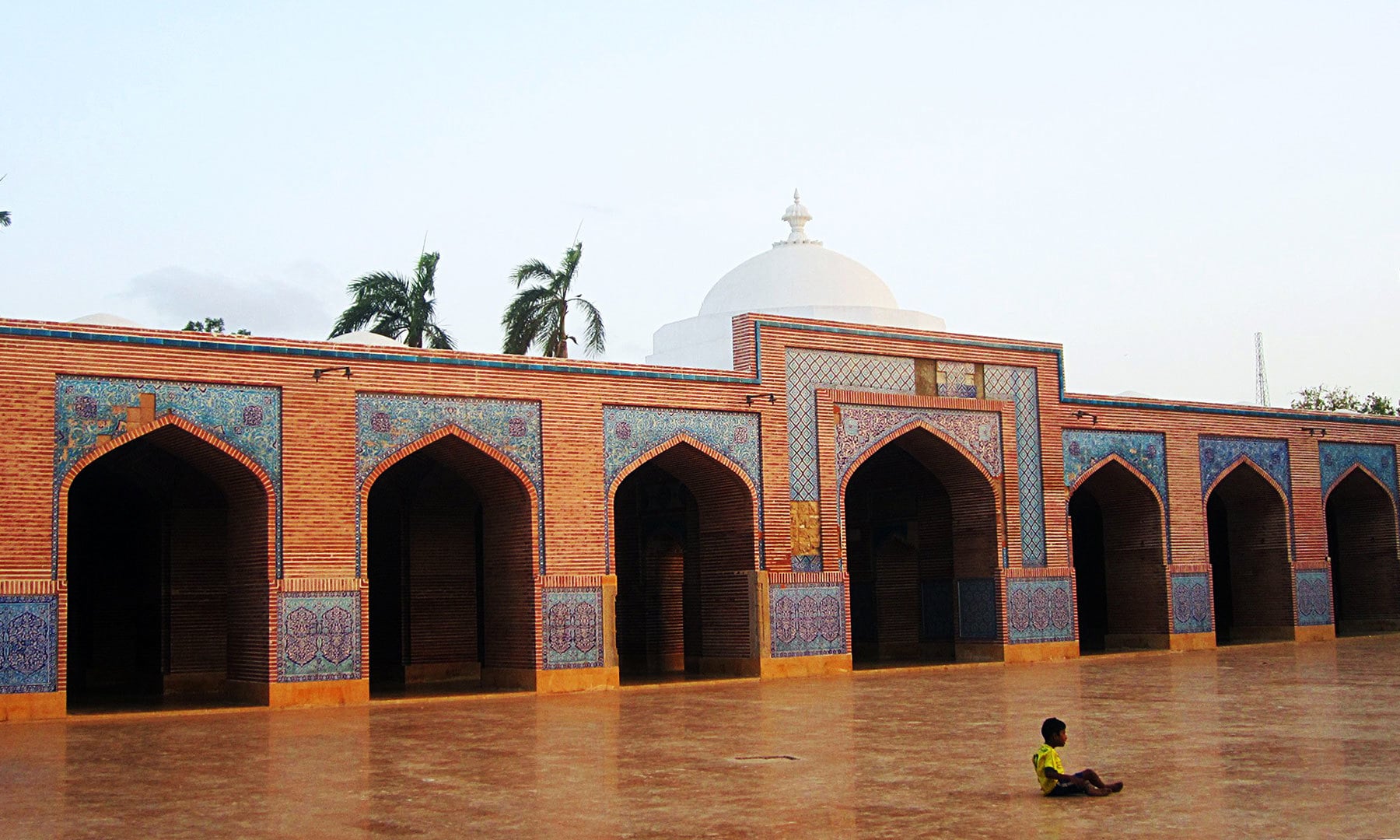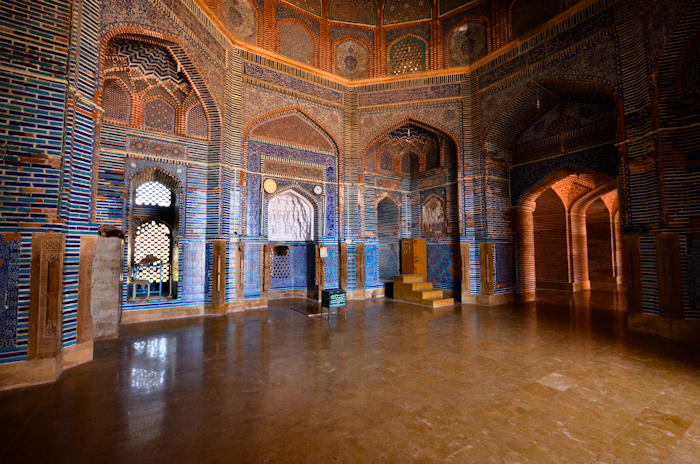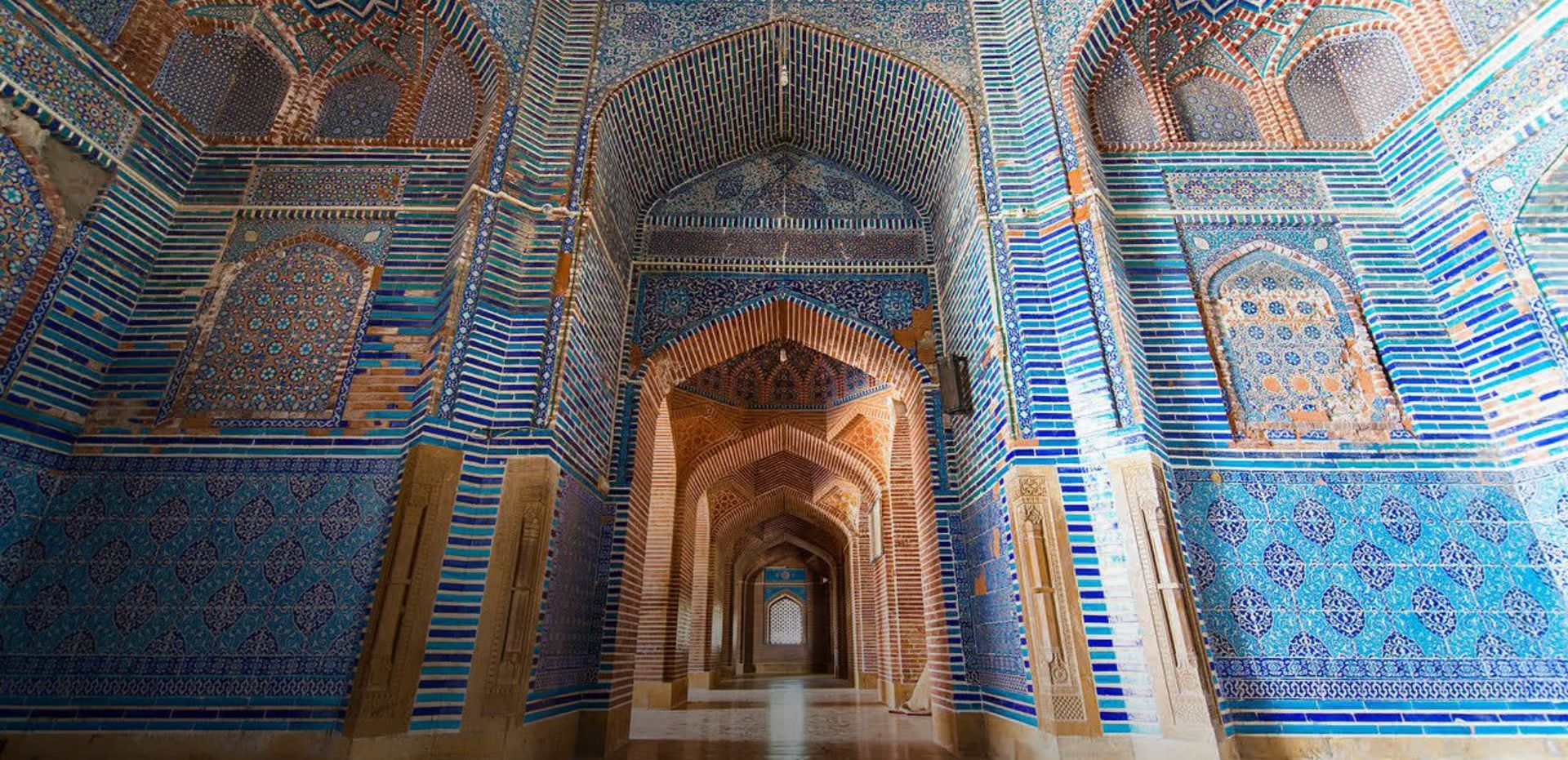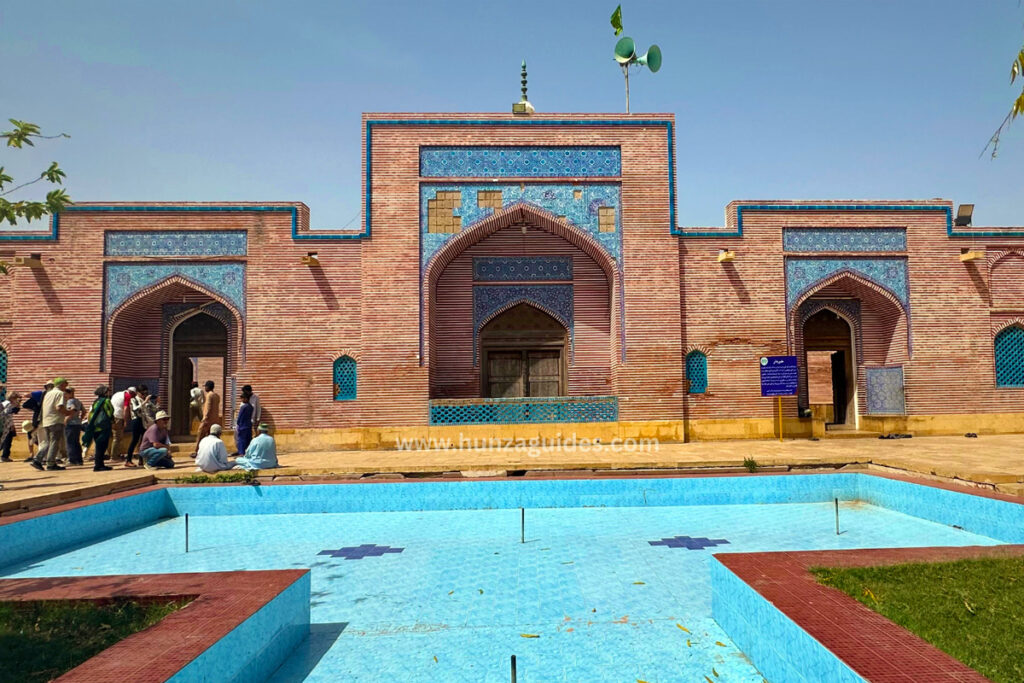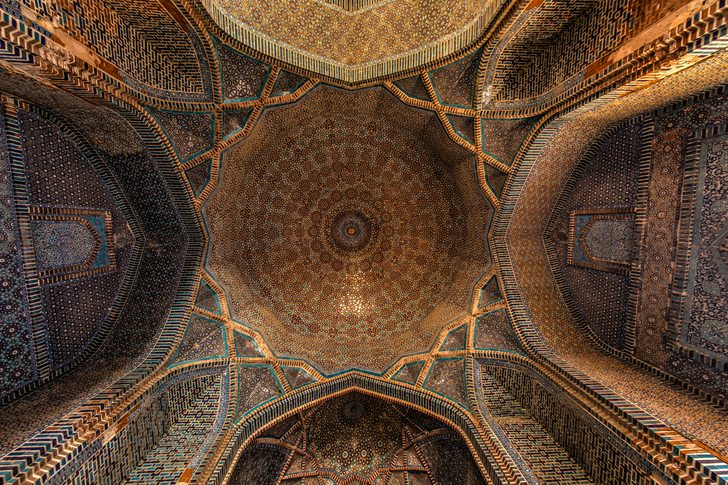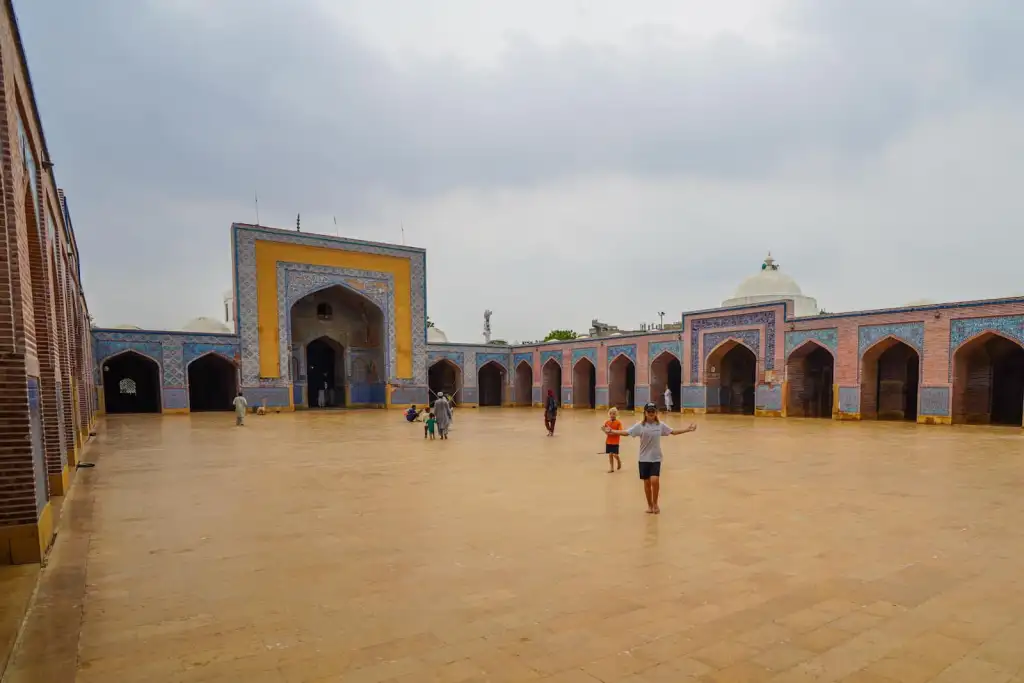
About the Shah Jahan Masjid Thatta
A Masterpiece of Mughal Architecture in Sindh
The Shah Jahan Masjid, also known as the Jamia Masjid of Thatta, is a stunning example of Mughal-era architecture in the city of Thatta, located in the Sindh province of Pakistan. Built during the reign of the Mughal Emperor Shah Jahan in the 17th century, this mosque is not only a place of religious significance but also a symbol of the architectural brilliance and cultural richness of the Mughal dynasty. With its intricate tile work, extensive use of red bricks, and harmonious proportions, the Shah Jahan Masjid stands as a testament to the fusion of Persian, Central Asian, and Indian influences that defined Mughal art and architecture.
Historical Background
The Shah Jahan Masjid was commissioned by Emperor Shah Jahan in 1644 as a gesture of gratitude to the people of Thatta. During his reign, Thatta was a significant center of learning, culture, and trade. The emperor stayed in the region for some time and was impressed by the loyalty and hospitality of the local population. In appreciation, he ordered the construction of this grand mosque, intending it to be both a religious sanctuary and a monumental gift.
Construction of the mosque took place between 1644 and 1647, and it was designed by a team of architects and craftsmen from Delhi, Lahore, and Central Asia. The mosque has since stood as a symbol of peace, tolerance, and artistic expression.
Architectural Marvel
The Shah Jahan Masjid is renowned for its unique architectural features that distinguish it from other mosques built during the Mughal era.
Layout and Structure
The mosque spans an area of 6,300 square meters and is built entirely of red bricks, a material that was widely used during Shah Jahan’s reign. The overall layout follows a square plan, with a large central courtyard surrounded by arched prayer halls. Unlike many other Mughal mosques that feature grand minarets and domes, the Shah Jahan Masjid is modest in its elevation, which adds to its serene and spiritual atmosphere.
There are 93 domes of varying sizes, making it one of the few mosques in the world with such a large number of domes. These domes not only add to the beauty of the structure but also enhance the mosque’s acoustics, allowing the Imam’s voice to be heard clearly throughout the mosque without the use of any electronic amplification.
Tile Work and Ornamentation
What truly sets the Shah Jahan Masjid apart is its breathtaking tile work, known as kashi kari. This art form, which originated in Persia, involves the use of colored tiles arranged in geometric and floral patterns. The mosque’s walls, ceilings, and arches are adorned with thousands of glazed tiles in shades of blue, turquoise, white, and yellow. These tiles create an enchanting effect, especially under sunlight, and display the extraordinary craftsmanship of Mughal artisans.
The mihrab (prayer niche) is particularly noteworthy for its elaborate decoration, symbolizing the direction of prayer toward Mecca. It is embellished with Quranic calligraphy and floral motifs, all meticulously crafted with colorful tiles.
Acoustics and Engineering
One of the most fascinating features of the Shah Jahan Masjid is its acoustic design. The domed roofs are constructed in a way that allows sound to travel evenly across the prayer halls. A person speaking at one end of the mosque can be heard clearly at the other end without raising their voice. This remarkable engineering feat, achieved without modern technology, demonstrates the advanced understanding of acoustics possessed by Mughal architects.
Cultural and Religious Significance
Beyond its architectural magnificence, the Shah Jahan Masjid holds deep cultural and religious importance for the people of Sindh and the broader Islamic world. It has served as a major center for Islamic education and worship for centuries. Thatta, once a hub of Islamic scholarship, used the mosque as a venue for religious discourse, Quranic teaching, and communal prayer.
The mosque has also become a site of pilgrimage and spiritual reflection. Many visitors, both Muslim and non-Muslim, come to the Shah Jahan Masjid not only to admire its beauty but also to connect with the spiritual and historical legacy it represents.
Preservation and Restoration
Over the centuries, the mosque has faced the effects of time, weather, and neglect. However, recognizing its historical and cultural value, several restoration efforts have been undertaken. The Department of Archaeology and Museums of Pakistan, along with UNESCO and other heritage organizations, have worked to preserve the mosque’s intricate tile work and structural integrity.
The mosque was included in the tentative list of UNESCO World Heritage Sites, acknowledging its universal cultural significance and the need for its continued preservation. Efforts have been made to use traditional materials and techniques in the restoration work to maintain the authenticity of the original structure.
Tourism and Educational Value
Today, the Shah Jahan Masjid is a popular tourist attraction, drawing visitors from across Pakistan and around the world. It offers a rich educational experience for students of architecture, history, and Islamic art. Visitors are often captivated by the mosque's peaceful ambiance, the play of light and color within its halls, and the timeless artistry embedded in every corner.
Local guides and historians often provide tours that highlight the mosque’s history, architecture, and the cultural context of the Mughal era. For many, a visit to the mosque is not just a journey through space but also through time, offering insights into the golden age of Muslim rule in South Asia.
Conclusion
The Shah Jahan Masjid in Thatta is more than just a place of worship—it is a living monument to the artistic genius and spiritual depth of the Mughal Empire. Its graceful design, exquisite tile work, and harmonious proportions continue to inspire awe and admiration. As one of Pakistan’s most treasured architectural landmarks, the mosque embodies a rich tapestry of history, faith, and cultural pride.
In an era where many historical monuments are threatened by neglect or modernization, the Shah Jahan Masjid stands as a beacon of heritage preservation and a reminder of the beauty that can emerge from the fusion of cultures and devotion. Anyone interested in Islamic architecture, Mughal history, or the cultural heritage of South Asia would find the Shah Jahan Masjid an essential and unforgettable experience.
Address: Shah Jahan Mosque, Thatta, Pakistan
